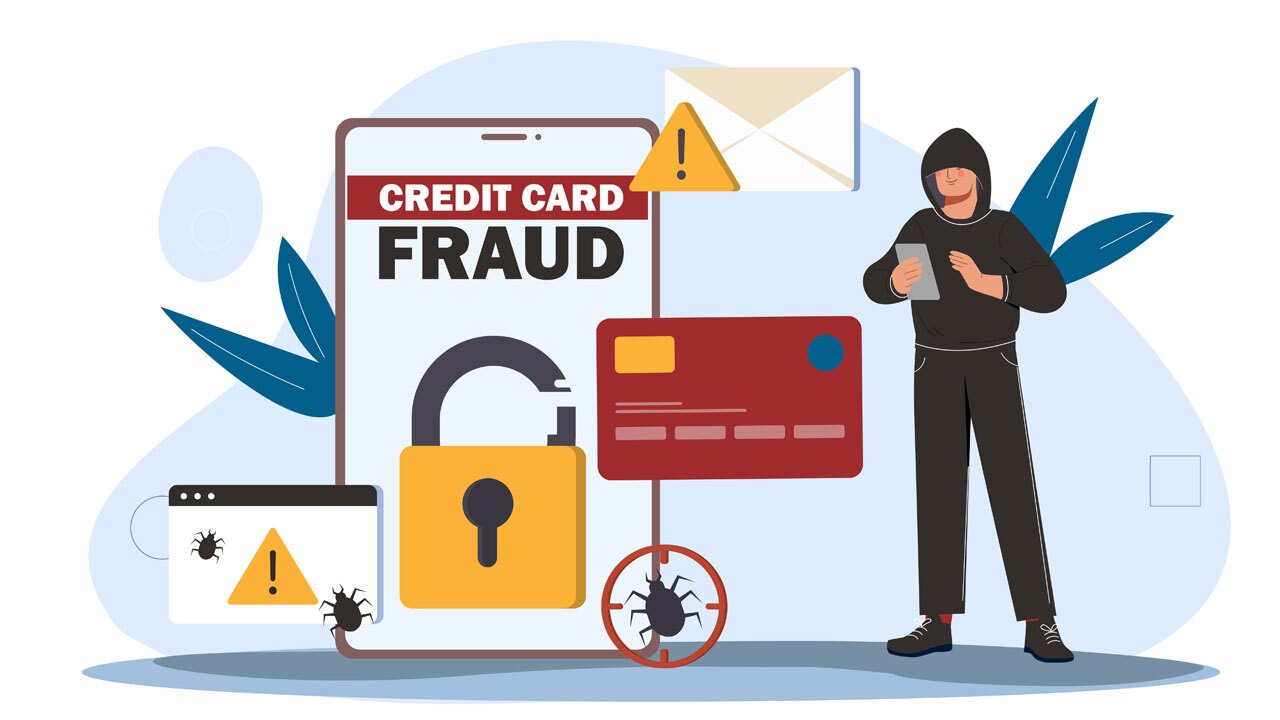In today’s technologically advanced world, the threat of credit card fraud has become increasingly widespread, impacting consumers and financial institutions. The ease of conducting credit card transactions and the growing complexity of fraudulent activities necessitate preventive solid measures. Recent statistics reveal that global losses from credit card fraud reached a staggering $32.04 billion in 2021, with projections indicating an increase to $38.5 billion by 2027. This article thoroughly explores the strategies that consumers can implement to protect themselves from credit card fraud, examines the role of financial institutions in combating fraud, and investigates how technology can enhance fraud prevention efforts.
Understanding Credit Card Fraud:
Credit card fraud involves the unauthorized use of a credit card to make purchases or withdraw cash and can manifest in various forms, including:
– Card-not-present fraud: Commonly occurring in online transactions, this fraud entails the illicit use of stolen credit card information to make purchases without the physical card.
– Card-present fraud: This occurs when fraudsters use a stolen card at physical points of sale (PoS).
– Identity theft: Criminals may steal personal information to open new credit accounts in someone else’s name.
The emotional and financial ramifications of credit card fraud can be severe, leaving victims feeling vulnerable and eroding their trust in financial institutions.
Strategies for Preventing Credit Card Fraud:
To effectively combat credit card fraud, consumers must adopt proactive measures to safeguard their financial information. Some key strategies include:
Secure Login Credentials:
– Practice Strong Password Management: Create and regularly update complex passwords containing a mix of letters, numbers, and special characters. Refrain from using the same password across multiple sites.
– Use Two-Factor Authentication: Where available, enable two-factor authentication (2FA) to add an extra layer of security. 2FA often requires a second verification form, such as a text message or email confirmation.
Exercise Caution with Upfront Payments:
– Recognize Scam Offers: Exercise caution with emails or messages promising significant sums of money or prizes in exchange for upfront payments. Legitimate businesses do not typically demand payment to claim a prize.
Take Your Time Before Making Payments:
– Avoid Impulse Decisions: Be wary of promotions designed to create a sense of urgency, as they can lead to hasty decisions. Always take the time to research a product or service before making a purchase.
Beware of Phishing Attempts:
– Identify Phishing Emails: Phishing scams often utilize familiar logos and language to deceive users into divulging sensitive information. Always verify the sender’s email address and exercise caution with unsolicited requests for information.
Watch for Skimming Devices:
– Inspect ATMs and PoS Terminals: Before inserting your card, carefully examine the card slot and keypad for any unusual attachments. If anything seems suspicious, opt to use another machine.
Use Different Cards for Various Purposes:
Separate Your Finances: Designate one card for autopay subscriptions and another for everyday spending. This practice minimizes exposure to fraud and can help you manage your finances more effectively.
The Role of Financial Institutions in Fraud Prevention
Financial institutions play a crucial role in protecting consumers from credit card fraud. They can implement various initiatives to achieve this:
Advanced Fraud Detection Systems:
By implementing AI and Machine Learning, financial institutions can utilize sophisticated algorithms to monitor real-time transactions and identify suspicious activities. These systems analyze spending patterns and flag unusual transactions for further review.
User Education Programs:
Banks can conduct comprehensive awareness campaigns to educate consumers about the risks associated with credit card fraud and provide them with strategies to protect themselves.
Zero-Liability Policies:
Offering policies that protect consumers from fraudulent charges instills confidence and encourages prompt reporting of suspicious activities.
Collaboration with Law Enforcement:
Financial institutions can establish partnerships with law enforcement agencies to share information about emerging fraud trends and develop effective strategies to combat fraudulent activities.
How Technology Enhances Fraud Prevention
Advancements in technology have revolutionized the detection and prevention of fraud. Key innovations include:
– E-commerce Fraud Management:
E-commerce platforms can implement cutting-edge analytics tools to monitor transactions and detect anomalies. Machine learning enhances the accuracy of these systems over time.
– Point-of-Sale (PoS) Fraud Management:
Implementing EMV chip technology enhances the security of card transactions by generating unique transaction codes that cannot be reused.
– Product Counterfeit Management:
Utilizing blockchain can help authenticate products and combat counterfeiting by providing a transparent and tamper-proof ledger of transactions.
Conclusion
Get the latest credit card fraud prevention, detection, and response insights to ensure a secure payment processing experience. Credit card fraud poses a pervasive threat that necessitates consumer vigilance and robust preventive measures from financial institutions. By adopting proactive strategies, such as securing login credentials, exercising caution with online payments, and leveraging advanced technologies, consumers can significantly reduce their risk of falling victim to fraud. Furthermore, collaboration between banks and technology providers can lead to the development of innovative solutions that enhance fraud detection and prevention. Staying informed and proactive is essential for safeguarding financial information and maintaining trust in economic systems as the digital landscape evolves. Protect your business with these effective Credit Card Fraud Prevention strategies.
FAQs
Q. What should I do if I suspect my credit card has been compromised?
A. Immediately contact your bank or credit card issuer to report the suspected fraud. They can freeze your account, investigate the transaction, and, if necessary, issue a new card.
Q. How can I spot phishing attempts?
A. Look for suspicious email addresses, poor grammar, or urgent language. Legitimate companies will not request sensitive information through email.
Q. Are mobile wallets safer than traditional credit card transactions?
A. Yes, mobile wallets often use tokenization and biometric authentication, making them generally more secure than traditional card transactions.
Q. What is skimming, and how can I avoid it?
A. Skimming involves unauthorized devices capturing your card information during a legitimate transaction. Always inspect ATMs and PoS terminals for suspicious devices before using them.
Q. How often should I check my credit card statements?
A. Regularly review your statements, ideally monthly, to spot any unauthorized charges early and report them promptly.
By following these guidelines and remaining vigilant, consumers can actively prevent credit card fraud and protect their financial security.




